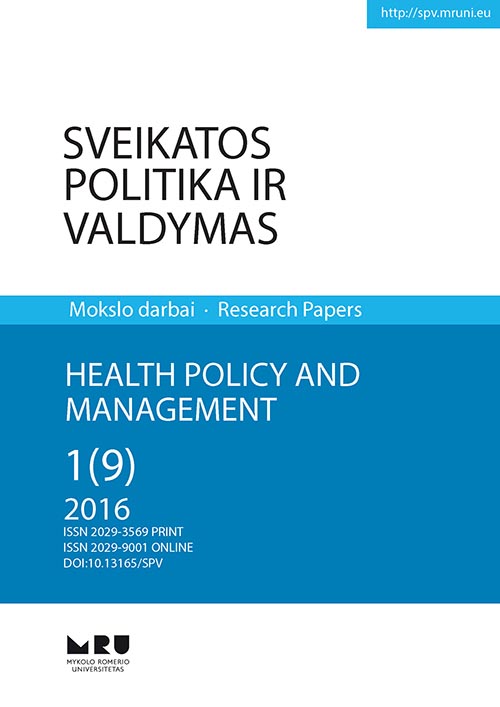Regional Inequalities of Avoidable Hospitalisation in Lithuania
##plugins.themes.bootstrap3.article.main##
Abstract
Background. Avoidable hospitalisation is useful in evaluating access and quality of primary and ambulatory healthcare. For Lithuania it is particularly relevant as hospitalisation remains higher than European level and regional inequalities in available healthcare services within country prevail.
Aim. This study aimed to assess regional inequalities of avoidable hospitalisation in Lithuania in the period of healthcare restructuring program.
Methodology. Regional age-adjusted rates of hospital admissions for a set of ambulatory care sensitive conditions (per 100 000 pop.) were used in this study.
Results. A decline of avoidable hospitalisation level was found in 2005–2011. Rural areas had higher avoidable hospitalisation level compare to urban areas, however in case of emergency avoidable hospitalisation the situation was opposite. Inequalities of avoidable hospitalisation existed between administrative regions. Relatively smaller regions had more ACSC hospital admissions.Conclusion. In Lithuania, avoidable hospitalisation was reduced throughout the period of healthcare restructuring program, which supports national plan to strengthen primary healthcare and expand outpatient services in context of inpatient care reduction. The overview of regional differences indicates potentiality of healthcare improvement and social care integration for policy makers and healthcare managers.
##plugins.themes.bootstrap3.article.details##
Authors contributing to Health policy and management agree to publish their articles under a Creative Commons Attribution-NoDerivatives 4.0 International Public (CC BY-NC-ND) License, allowing third parties to share their work (copy, distribute, transmit) and to adapt it, under the condition that the authors are given credit, and that in the event of reuse or distribution, the terms of this licence are made clear.








